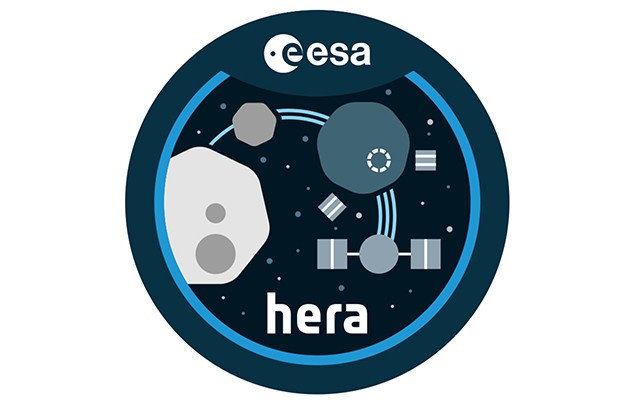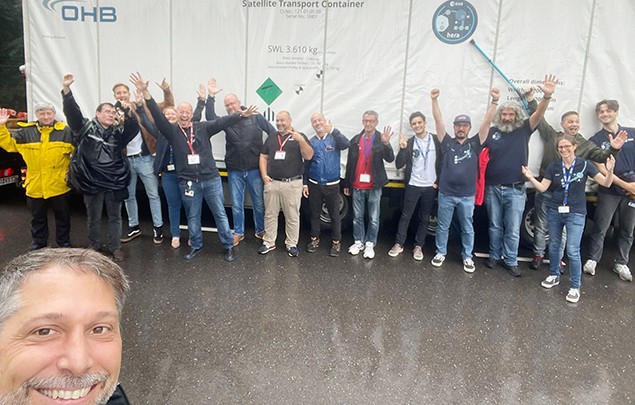Hera enters the final testing phase

Thirteen months ahead of its launch, the European probe Hera has been successfully assembled in Bremen, Germany, and delivered tothe European Test Services (ETS) at ESA’s ESTEC technology center in the Netherlands for environmental testing.
Hera is the European component of the first planetary defense collaboration known as AIDA (Asteroid Impact & Deflection Assessment), in which the European Space Agency (ESA) and NASA, have taken a first step towards jointly demonstrating an asteroid deflection technique.
Hera is designed to study the Didymos binary asteroid system, the same to which NASA’s DART probe was sent to impact on its moon Dimorphos, in September 2022. Scheduled to arrive in 2026, Hera will perform extensive high-resolution visual, multi-spectral, and gravimetric science mapping during its proximity operations around Didymos. This will provide the scientific community with information relevant to validate the kinetic impactor planetary defense technique. By validating impact models at full scale, there is also hope that Hera will provide relevant scientific data about the origins of our solar system.
Hera’s assembly consisted of integrating two modules: 1) the “Core” module, which houses the onboard computer, subsystems, measurement instruments (AFC, PALT, TIRI, SMC, and Hyperscout), and two CubeSats (Juventas and Milani), and 2) the “Propulsion” module, which contains tanks, pipes, and thrusters that will propel Hera to its destination. As prime contractor, OHB is leading this phase as well as the overall mission.
As part of Hera, GMV is responsible for the mission analysis of the close proximity operations and the design and development of the probe’s autonomous Guidance Navigation and Control (GNC) system. This system has two features that will be key to the mission’s success and make it a groundbreaking development. The Hera GNC not only autonomously executes the flight plan defined by the operations team on ground, but it can also increase its level of autonomy, allowing it to calculate maneuvers required to fly at a certain altitude on board or perform an escape maneuver if there is a risk of collision.
In addition, GMV is also responsible for the mission analysis and the design and development of the GNC system for Juventas, one of the two CubeSats that Hera will deploy around the binary asteroid system.
Henceforth, Hera will undergo a period of environmental testing at the ETS center before being shipped to Kennedy Space Center in Florida for launch on a Falcon 9 rocket in October 2024.
